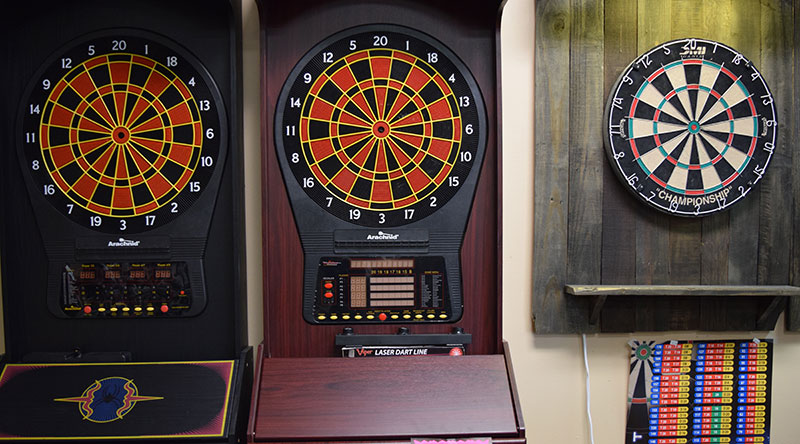Mastering the Game of Darts: Scoring Rules, Board Selection, and Choosing the Right Equipment
The game of darts is a test of precision, skill, and a bit of mathematical prowess, enjoyed by millions worldwide. Whether in a competitive arena or a friendly game at the local pub, darts offers endless hours of entertainment and challenge. This article aims to demystify the game for both newcomers and seasoned players, covering essential aspects such as scoring rules, board selection, and choosing the right equipment to elevate your game.
Understanding Dart Scoring
At the heart of darts lies its scoring system, a blend of skillful precision and strategic calculation. The standard dartboard is divided into 20 numbered sections, scoring from 1 to 20 points, with the bullseye and the outer bullseye offering their unique scores. Here’s a simplified breakdown:
-
Single area: The thin outer portions of each number section, scoring the number’s value.
-
Double ring: The outermost thin ring, scoring double the number’s value.
-
Triple ring: The middle thin ring, scoring triple the number’s value.
-
Outer bullseye (Green): Scores 25 points.
-
Bullseye (Red): Scores 50 points.

Dart scoring might seem straightforward, but mastering it requires familiarity with the board’s layout and the strategic implications of each section. For example, aiming for the triple 20 (the thin strip just below the number 20) offers the highest scoring potential but comes with higher risk compared to aiming for the larger, lower-scoring areas. Players need to balance their strategy between scoring high and maintaining consistency, especially in games like 501, where reducing your score to zero first is the goal.
Popular Dart Games and Scoring Rules
|
Game Name |
Players |
Objective |
Scoring Mechanism |
|
501/301 |
2+ |
Reach exactly 0 from 501/301 |
All throws count, must finish on a double |
|
Cricket |
2+ |
Close all numbers and lead in points |
Hits on numbers 15-20 and bullseye count |
|
Around the World |
1+ |
Hit each number in sequence (1-20) |
First to complete the sequence wins |
Dart Boards: Types and Selection
How Dart Boards Are Made
Dartboards come mainly in two types: bristle and electronic. Bristle boards, used in professional games, are made from sisal fibers, tightly compacted to create a durable surface that heals itself after darts are removed. Electronic boards, suited for casual play, are made from plastic and have soft-tip darts, ideal for safety and electronic scoring.
Choosing the Right Board
Choosing the right dartboard is crucial for both enjoyment and skill development. Bristle boards, preferred by professionals, offer longevity and a feel that’s conducive to improving one’s game. The fibers of the sisal plant, used in these boards, self-heal after darts are removed, preserving the board’s surface over time. Electronic boards, while offering instant scoring and a safer environment with soft-tip darts, can alter the game’s feel and might not provide the same level of precision as bristle boards.
For those looking to replicate the professional experience at home, investing in a high-quality sisal bristle board like the Winmau Blade 5, which reduces bounce-outs with its thin wiring, is advisable.
-
Professional Use: The sisal bristle board is the standard for professionals, with the Winmau Blade series being a popular choice.
-
Beginner Considerations: New players might prefer an electronic board for its ease of use, safety, and built-in scoring.
Choosing the Right Dart Equipment
The weight of the dart is a fundamental aspect of its performance, with lighter darts requiring a more forceful throw, while heavier darts might offer more stability but require a steadier hand. Beyond weight, the material of the dart barrel (tungsten being a popular choice for its density and slim profile), the length and material of the shaft, and the shape and texture of the flights can all significantly influence the dart’s flight path and precision.
Experimenting with different combinations of shaft lengths, flight shapes (standard, slim, or kite), and dart weights is key to finding what best suits your throwing style and grip.
Enhancing Your Dart Playing Experience
Modern technology, such as dart tablets and online scoring applications, can add a new dimension to playing darts. These tools not only simplify scoring and game tracking but also offer players insights into their performance, areas for improvement, and even allow for online play against opponents worldwide. The interactive nature of these technologies makes practice more engaging and can significantly speed up the learning curve for beginners.
Mastering the game of darts requires understanding the scoring rules, selecting the right board and equipment, and possibly incorporating technology to enhance the experience. Whether you’re a seasoned player or just starting, considering your skill level and preferences when making these choices will help you enjoy the game to its fullest.
Ready to elevate your darts game? Explore our selection of professional and beginner dart boards, high-quality darts, and the latest in dart technology at Frontrangepooltables.com. Whether you’re practicing for a tournament or just having fun with friends, find everything you need to hit the bullseye every time!